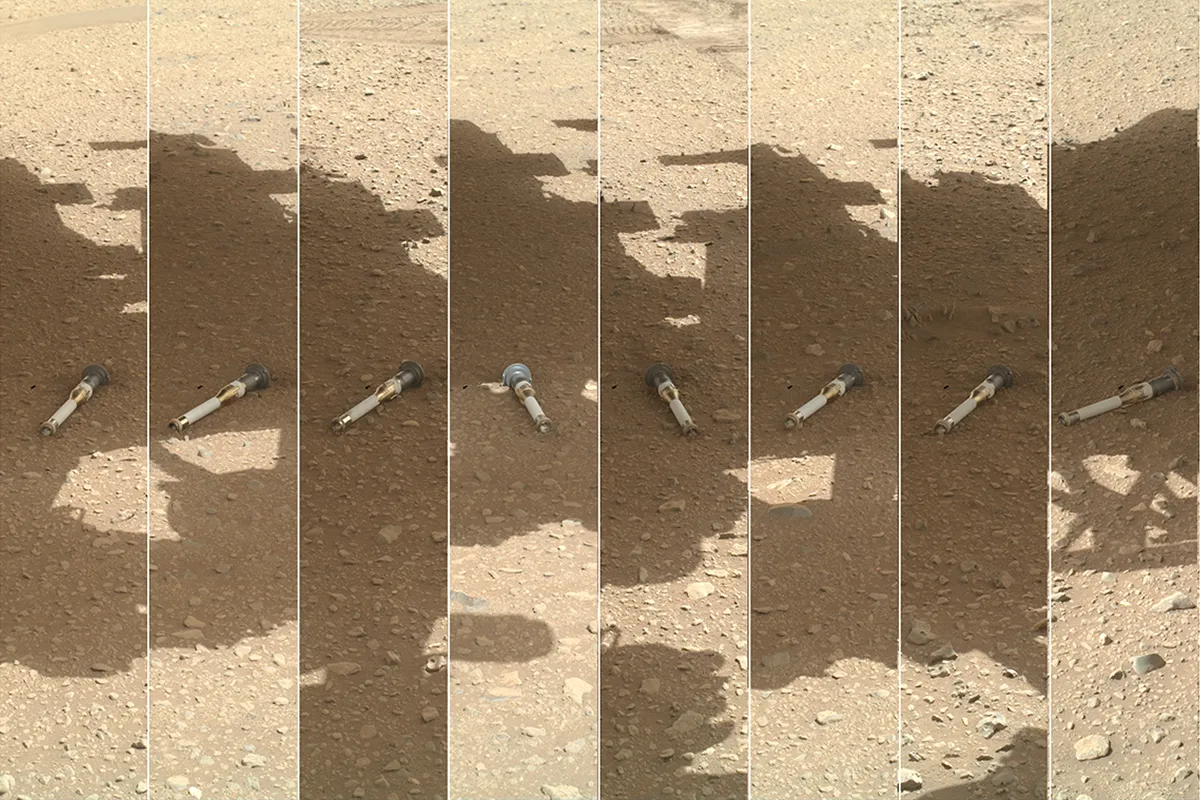A NASA rover operating on the surface of Mars may have found evidence of ancient microbial life on the Red Planet, the space agency has said.
The NASA Perseverance Mars rover has collected samples from an ancient dry riverbed in Jezero Crater, which it has been investigating since landing in February 2021 until late 2024.
More on Perseverance rover

Taken from a rock called 'Cheyava Falls' in 2024, the sample is known as 'Sapphire Canyon' and contains potential 'biosignatures', which means it could have a biological origin.
In other words: it could be evidence that microbial life once existed on Mars.
The findings have been published in the science journal Nature.

Ancient Mars, ancient life?
Today Mars is a cold, dry, barren, harsh and radioactive world, but in its ancient history it was much warmer and wetter, and could have been habitable.
Rovers and spacecraft investigating Mars have found dried-up riverbeds and lakes, showing water once flowed on the Red Planet.
And because water is a necessary ingredient for life as we know it, that means Mars may once have been able to host life.
Finding hard evidence that life did indeed once exist on Mars, however, has so far proven elusive.
"The identification of a potential biosignature on the Red Planet is a groundbreaking discovery, and one that will advance our understanding of Mars," says acting NASA Administrator Sean Duffy.
Biosignatures in Cheyava Falls
Perseverance discovered Cheyava Falls in July 2024 while exploring the 'Bright Angel' formation, which is a set of rocky outcrops on the northern and southern edges of Neretva Vallis.
Neretva Vallis is an ancient river valley that's about 400 metres wide, and was formed by water flowing into Jezero Crater, back when Mars had water on its surface.
"This finding is the direct result of NASA’s effort to strategically plan, develop and execute a mission able to deliver exactly this type of science – the identification of a potential biosignature on Mars," says Nicky Fox, associate administrator, Science Mission Directorate at NASA Headquarters in Washington.
"With the publication of this peer-reviewed result, NASA makes this data available to the wider science community for further study to confirm or refute its biological potential."

The rover found sedimentary rocks composed of clay and silt, which, when found on Earth, can contain ancient evidence of past microbial life.
They're rich in organic carbon, sulphur, oxidised iron (rust) and phosphorous.
"The combination of chemical compounds we found in the Bright Angel formation could have been a rich source of energy for microbial metabolisms," says Perseverance scientist Joel Hurowitz of Stony Brook University, New York and lead author of the paper.
"But just because we saw all these compelling chemical signatures in the data didn’t mean we had a potential biosignature. We needed to analyze what that data could mean."

What Perseverance found
NASA's Perseverance rover is equipped with a fleet of instruments for analysing samples it finds on the Red Planet.
Its PIXL (Planetary Instrument for X-ray Lithochemistry) and SHERLOC (Scanning Habitable Environments with Raman & Luminescence for Organics & Chemicals) instruments were used in this discovery.
In Cheyava Falls, the rover found an arrow-shaped rock about 1 metre by 0.6 metres, which contains colourful spots.
Scientists say these spots may have been produced by microbial life using the chemicals found in the rock as an energy source.
Perseverance found visual evidence of chemical reactions occurring on the rock, which the science team call 'leopard spots'.

These spots contain the signature of two iron-rich minerals: vivianite and greigite.
NASA says Vvivianite is found on Earth in sediments, peat bogs and decaying organic matter, while some microbial life on Earth can produce greigite.
That means these are potential fingerprints of microbial life producing energy and growing.
However, more evidence is needed, because these minerals can also be generated without the presence of life.
They may be formed by high temperatures, acidic conditions and binding by organic compounds.
But NASA says the rocks at Bright Angel don't show evidence they experienced high temperatures or acidic conditions.

The vibrancy of youth
It had been thought that signs of ancient life on Mars would be restricted to older rock formations, but this discovery was made in some of the youngest sedimentary rocks Perseverance has analysed.
This could mean Mars may have been habitable for a longer period, or later in the planet’s history than previously thought.
"Astrobiological claims, particularly those related to the potential discovery of past extraterrestrial life, require extraordinary evidence," says Katie Stack Morgan, Perseverance’s project scientist at NASA’s Jet Propulsion Laboratory in Southern California.
"Getting such a significant finding as a potential biosignature on Mars into a peer-reviewed publication is a crucial step in the scientific process because it ensures the rigor, validity, and significance of our results.
"And while abiotic explanations for what we see at Bright Angel are less likely given the paper’s findings, we cannot rule them out."

